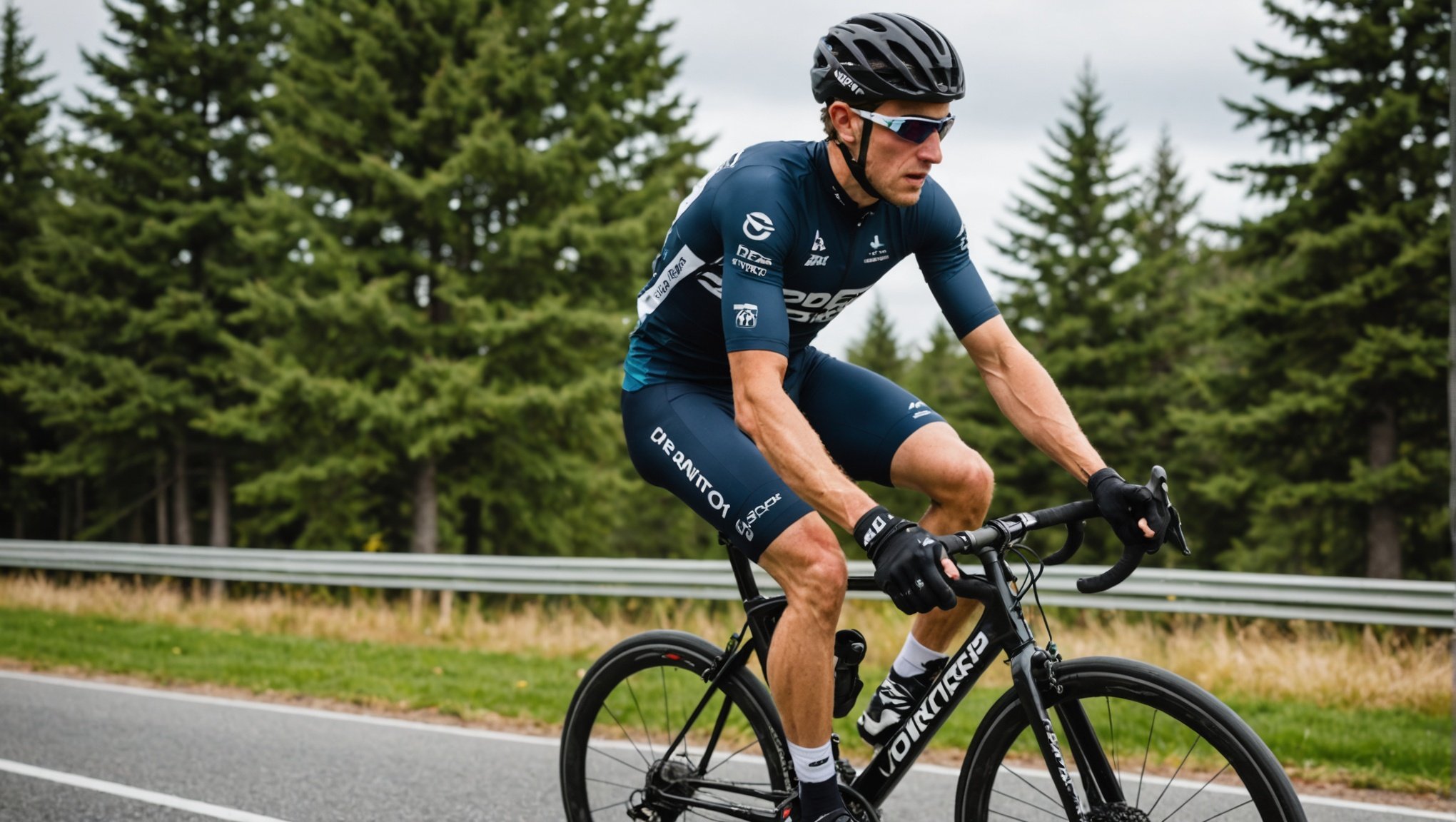Maximizing Off-Season Training Strategies for Competitive Cyclists: Your Ultimate Guide
As the cycling season comes to a close, many competitive cyclists find themselves at a crossroads, wondering how to maintain and even improve their performance during the off-season. The off-season is not just a time for rest; it is a critical period for strategic training that can make all the difference when the next season rolls around. Here’s a comprehensive guide to help you maximize your off-season training.
Understanding the Importance of Off-Season Training
Off-season training is often misunderstood as a time to completely step away from the bike. However, this period is crucial for maintaining and enhancing your cycling performance. Mathieu Heijboer, head of performance at Visma Lease a Bike, emphasizes the importance of intensity during the off-season: “The number of intensity days in winter increased. Nowadays riders enter the December camp on a much higher level that was previously impossible to imagine.”
Also read : Unlocking Potential: Leveraging Advanced Data Analytics for Effective Youth Soccer Talent Scouting
Balancing Intensity and Recovery
One of the key strategies for effective off-season training is balancing intensity with recovery. This balance is essential to avoid overtraining and ensure that you are making progressive gains.
Zone Training: The Polarized Approach
Polarized training involves splitting your time between high-intensity intervals and low-intensity recovery rides. Research has shown that riders who spend most of their training time in Zones 1 and 3, rather than Zone 2, enjoy greater gains in anaerobic power. This approach is known as polarized training and is highly effective for improving performance.
Have you seen this : Ultimate Guide to Customizing Off-Season Conditioning Workouts for Competitive Cyclists
For example, if you are planning a 4-day riding regimen, you might allocate two days for hard workouts (intervals or hilly rides) and the other two days for very easy rides. This ensures that you are pushing your body hard enough to see improvements but also allowing adequate time for recovery.
Incorporating Strength Training
Strength training is another vital component of off-season training. As you age, you encounter sarcopenia, the loss of muscle volume, which can significantly impact your cycling performance. Resistance training helps retain muscle mass and improve overall power.
Sport-Specific Strength Training
Sport-specific strength training targets the muscle groups and biomechanics involved in cycling. This approach enhances your strength, power, and agility, making your movements more efficient and reducing the risk of injuries.
Here are some actionable tips for incorporating strength training into your routine:
- Assessment of Needs: Analyze the key physical demands of cycling, including the primary movements and muscles involved.
- Develop a Training Program: Design a regimen that targets these specific muscles and movements. For cycling, this might include exercises like squats, lunges, and leg press to strengthen the legs, as well as core stabilization exercises to improve stability on the bike.
- Monitor Progress: Regularly assess your progress through formal evaluations and informal feedback. Adjust your training program as needed to avoid overtraining or injury risk.
Cross Training and Alternative Activities
Cross training and engaging in alternative aerobic activities can be highly beneficial during the off-season. These activities help maintain cardiovascular fitness without the repetitive stress of cycling.
Examples of Cross Training
- Cross Country Skiing: This activity is excellent for maintaining cardiovascular fitness and strengthening the upper body.
- Running: While it can be high-impact, running can be a good alternative for some cyclists, especially if done in moderation.
- Swimming: A low-impact activity that is easy on the joints and excellent for cardiovascular endurance.
For instance, a 16-year-old cyclist might benefit from alternative activities like cross country skiing during the winter months to maintain fitness without the monotony of cycling every day.
Structuring Your Training Plan
A well-structured training plan is essential for maximizing your off-season training. Here are some key considerations:
Weekly Training Schedule
Here is an example of a weekly training schedule that balances intensity and recovery:
| Day | Activity | Intensity |
|---|---|---|
| Monday | Easy Spin | Low |
| Tuesday | Interval Training | High |
| Wednesday | Rest Day | – |
| Thursday | Strength Training | Moderate |
| Friday | Easy Spin | Low |
| Saturday | Long Slow Distance Ride | Moderate |
| Sunday | Rest Day or Active Recovery | – |
Seasonal Phases
The off-season can be divided into several phases, each with its own focus:
- Transition Phase: This is the initial phase where you reduce the intensity and volume of your training. It’s a time for rest and recovery.
- Base Building Phase: Here, you start to increase the volume of your training but keep the intensity low. This phase is crucial for building endurance.
- Build Phase: In this phase, you introduce higher intensity workouts while maintaining a significant volume of training.
For example, during the transition phase, you might limit your bike time to 4 days per week, with two hard days and two easy days, and include strength training sessions after your cycling workouts.
Monitoring Your Progress
Monitoring your progress is crucial to ensure you are on the right track. Here are some tools and metrics to help you track your performance:
Heart Rate and Power Metrics
Using tools like heart rate monitors and power meters can provide valuable insights into your training. Here’s how you can use these metrics:
- Heart Rate Zones: Training in specific heart rate zones can help you target different aspects of your fitness, such as endurance, anaerobic threshold, and maximum power.
- Power Metrics: Power meters can help you measure your output accurately, allowing you to adjust your training intensity and volume based on data.
User Stories and Feedback
Listening to user stories and feedback from other cyclists can also be incredibly valuable. For instance, Keegan Swenson, a Gravel star, starts his off-season in November with tempo work and extends his intensity with group rides, pulling 360 watts for 40 minutes. This kind of real-world example can inspire and guide your own training.
Practical Tips for Your Training
Here are some practical tips to help you maximize your off-season training:
- Start Slow: Don’t jump back into intense training immediately. Gradually increase the intensity and volume of your workouts.
- Listen to Your Body: Pay attention to signs of overtraining and take rest days as needed.
- Mix It Up: Vary your training routine to avoid monotony and prevent overuse injuries.
- Stay Consistent: Consistency is key. Stick to your training plan and make adjustments based on your progress.
Table: Comparing Different Off-Season Training Protocols
Here is a comparative table highlighting the benefits and drawbacks of different off-season training protocols:
| Protocol | Benefits | Drawbacks |
|---|---|---|
| Low-Intensity Training | Easy on the body, reduces risk of overtraining | May not maintain high-level fitness, lacks specificity |
| High-Intensity Interval Training (HIT) | Maintains high-level fitness, improves anaerobic power | Higher risk of overtraining, requires careful planning |
| Polarized Training | Balances intensity and recovery, improves overall performance | Requires careful planning, can be challenging to execute |
| Strength Training | Improves muscle strength and power, reduces injury risk | Can be time-consuming, requires proper form and technique |
Maximizing your off-season training is about finding the right balance between intensity, recovery, and cross training. By incorporating polarized training, strength training, and alternative aerobic activities into your routine, you can ensure that you enter the next cycling season stronger and more prepared than ever.
As Roberto Vukovic aptly puts it, “Intensity is not the enemy but execution is. You can and should implement intensity in the offseason without overdoing it. All you need is a plan and keeping track of your fatigue.”
By following these strategies and tips, you can optimize your training, enhance your performance, and set yourself up for success in the upcoming season. Remember, the off-season is not just a break; it’s an opportunity to build a stronger, faster you.











